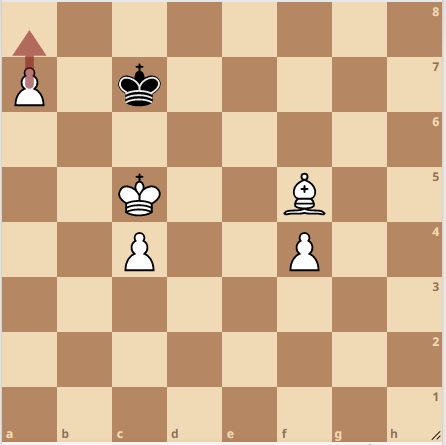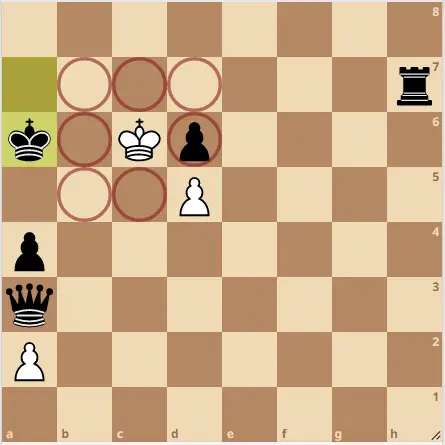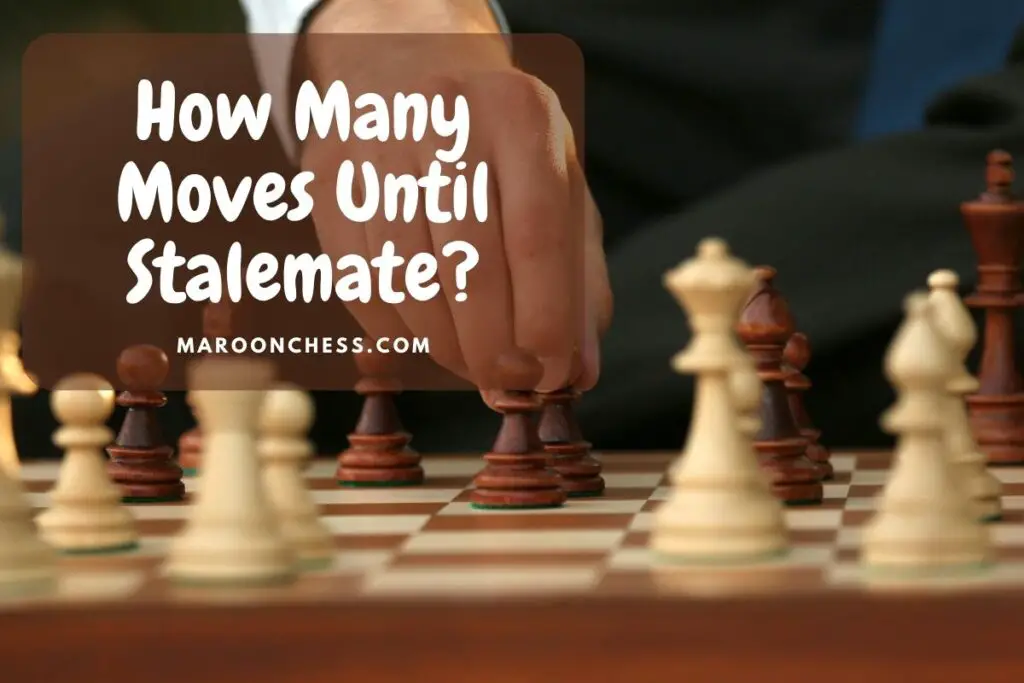Stalemate is an incident in chess that happens to players of all levels. The player who has the winning advantage should avoid this at all cost, whereas the player on the losing end must find a clever way to make this happen.
In this article, we will answer your most asked question, “How many moves until stalemate?” We will also give you some tips on how to avoid this incident from occuring. So with that said, let’s jump right in!
How Many Moves Until Stalemate?
Stalemate in chess is when one side has no legal moves left in the position, but the king is NOT under attack. When this happens, the game is declared a draw.
There is no particular number of moves until stalemate. Once there are legal moves to be made over the chess board, the game shall go on.
However, the game ends in a draw if neither side can make progress in under 50 moves. By progress, we mean the advance of a pawn, or capturing of a piece.
Either players can claim the 50 move rule once it is reached over the board. However, the game can still continue if neither players want to claim the 50 move rule. In other words, the game doesn’t automatically end in a draw once 50 moves have been made without progress. The draw must be claimed by the player whose turn it is to move.
Threefold Repetition
The threefold repetition is a rule in chess that states a player can claim a draw if the same position occurs 3 times over the board. To avoid a 3 fold repetition in chess, it’s important that you keep track of your previous moves so that you don’t play the same position more than 2 times.
Threefold repetition is more common than the 50 move rule and can be abused by players especially at the top level. For example, there are many different chess openings that ends in the repetition of moves as early as move 10. Some grandmasters intentionally go into these theoretically drawn positions as a way of securing a half point or trying to match fix the tournament.
Nevertheless, claiming a 3 fold repetition favors the side on the losing end. If you are ever down in material, then you should find a way to give perpetual check to your opponent’s king so that the game ends in 3 fold repetition of moves. By giving perpetual check to the opposing king, the position will appear 3 times and that means you can claim a draw if you stand no chances of winning.
How Many Moves Until Stalemate With Only King?
If you only have a lone king on the chess board and your opponent has sufficient material to checkmate, then your opponent must do so under 50 moves, else the game ends in a draw. One aspect where this applies is checkmate with knight and bishop.
If you don’t know the strategy to checkmate a lone king with just a knight and bishop, you may waste several moves, and that could cause the 50 moves to expire. In a position with just king vs king knight and bishop, the player with the material advantage must deliver checkmate in under 50 moves if he wants to avoid a draw.
White must checkmate the black king in less than 50 moves

A player who knows how to checkmate with knight and bishop should be able to pull it off in 25-35 moves and secure the win.
There are many other advanced endgame checkmates that are quite challenging to pull off. This usually includes: 2 bishop checkmate, or checkmate with Queen vs rook.
All in all, the 50 move rule and the threefold repetition rule are 2 useful rules in chess that prevents a chess game from lasting longer than it should. Without these rules in place, the game of chess could go on forever.
How To Achieve Stalemate?
You may want to achieve stalemate as your last ditch effort before resigning the game. Stalemate is more likely to happen when a player has limited amount of time on their clock. They make a move that puts their opponent’s king in a stalemate position with no legal squares to move. It usually happens because they are not paying attention or they don’t have enough time to think.
In the following game between Gm Hans Niemann (white) and Gm Daniel Naroditsky (black), the position ended in a stalemate after Hans Niemann mistakenly promoted his a7 pawn to a queen. With all the material that white had, Gm Naroditsky was able to get his king to the c7 square as a last ditch effort to stalemate the game, and fortunately for him, his opponent fell for the trick.
a8=Q puts black king in stalemate

Of course, this was a blitz game and Hans Niemann only had 10 seconds on his clock to give him the benefit of the doubt. He really didn’t have the time to figure out that pawn a8=Queen is stalemate as he steam rolled his pawn down the board.
In classical games however, it is harder to trick your opponent into stalemate as there is enough time on the clock to discover the stalemate threat. Still, these types of tricks are always useful as a last ditch effort in fast time controls.
How To Avoid Stalemate?
Stalemating the game when you have a completely winning position is extremely wasteful to say the least. But it happens, even to very strong players as we’ve seen in our previous example.
When you have a lot of checkmating material on the board and your opponent has a lone king, you should still pay attention as stalemate could be lurking in the position. One slip up and the game could go to a waste.
To avoid stalemate, you should follow these tips below:
- See to it that your opponent’s king has legal squares to move.
- See to it that your opponent has another piece on the board that can move or advance forward such as a pawn. Retaining just a single one of your opponent’s pawns can greatly reduce your chances of stalemating the game. In other words, don’t capture all of your opponent’s pawns off the board.
- If you plan on making a non attacking move, ask yourself this, “Will my opponent have any legal moves to make after I play this move?
- Look out for nasty sacrifices. In the endgame, your opponent may try to give up one of his pieces to stalemate the game by putting your king in check. For example, in the position below, white is down a rook. However, white figures out a way to stalemate the game by sacrificing his queen on a6. If the black king captures the queen, the game will end in a stalemate as the white king has no legal squares to move.

Stalemate: White has no legal moves left.

Final Thoughts
Stalemate is one aspect of chess that some players seem to forget. If you are the side with the winning advantage, you should always watch out for stalemate opportunities in the position and tricks from your opponent. You don’t want a good game go to waste. Conversely, if you are the player on the losing end, you should cleverly put your king in a position that could lead to a possible stalemate.


